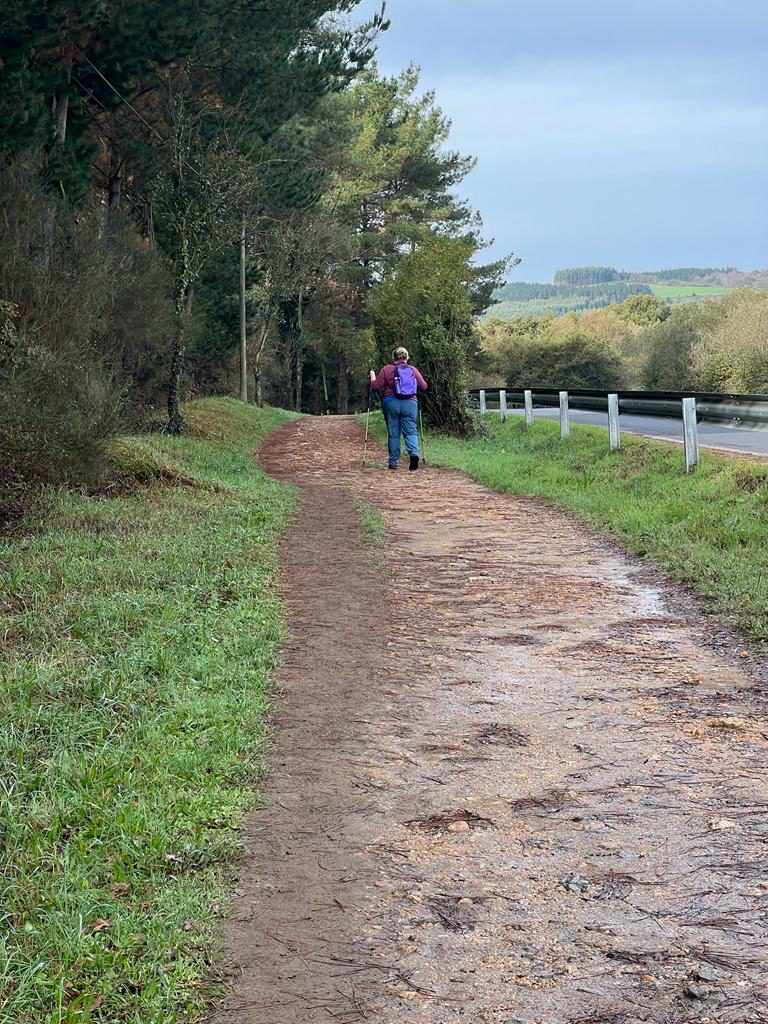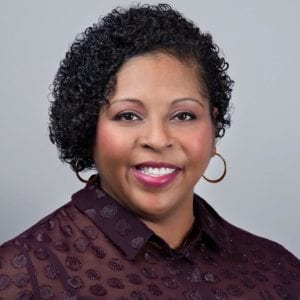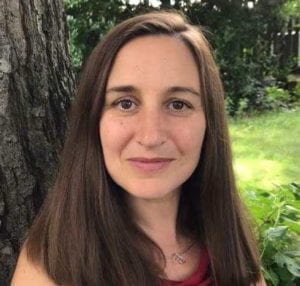As I slowly moved down another painful declining portion on my second day walking the Camino de Santiago, my already injured knee rolled in and loudly popped. Intuitively, I knew that I was done for the day on these legs that already walked 12 miles plus 14 ½ the day before. One of the main reasons that I even decided to try the last five days of the original French Route (from Sarria to Santiago) is that taxis could easily be called in the case of injury. Yet my reactionary comment to my intuition was to go into negative self-talk, limping along for at least another ½ mile, before making the call. It was only another two miles or so to our planned stop for the night. And there I focused on what my body wouldn’t allow me to do easily instead of focusing on what I’d already done—walk 27 miles over two days on a right knee that’s been messed up since I was a teenager.
I shared in my pre-Camino blog that in training to walk the planned 62 miles in five days, I came to believe that I could really do it. And I found most of the walking quite enjoyable and the many uphill inclines, while challenging, were doable. I was not fully prepared for the intensity of the downhills and declines, especially on sections of the path that were rocky and uneven. In the months leading up to the Camino, both my orthopedist and physical therapist told me that I was practically bone-on-bone on the right knee, and that the next step after arthritis medications and physical therapy would be gel injections to give my knees the needed shock absorption that was missing. In retrospect, I never ought to have tried the downhills of the Camino without them, and after this journey there is no doubt in my mind that my knees need this treatment.
After arriving at Palais de Rei by taxi, I found it quite interesting that our hotel was right next to a 24/7 Urgent Care and I wondered if that was a sign that I needed to go. After icing my knee, which always helps with the inflammation, I decided to see how I felt in the morning. Following my morning stretches, I opted to start walking that day which, at 18 miles, happened to be our longest scheduled day. I made a promise to myself that I wouldn’t try to be a hero, rather, I would take it a mile/kilometer at a time. The first hour started out well and I really felt that I could handle the day, especially after reading that this portion to Arzúa would be easy on the foot. My Camino companions Irene and Kellie laughed the night before, wondering, “Whose foot?”

Definitely not mine when I hit the first bad decline on the rocks, about three miles into that day’s hike. I moved as slowly as I could, and the tears started pouring even harder than the light rain we walked in that morning. Tears flow pretty easily for me and they were abundant on the first two days of the Camino as I processed feelings around all of the relationships of my life—with my partners, my family of origin, my profession, my faith and spiritual practices, and most importantly, my wounded body. Yet on this third day, all of the feelings related to my body and the horrible things that people and societal forces have tried to get me to believe about it since I was very small, flooded me.
I remembered my childhood pediatrician, himself an overweight man who carried himself like a bully, lecturing me at age five that I weighed ten pounds more than a child of my age should weigh. He told me that if I didn’t cut out the junk food now, it would be harder to lose the weight when I got older. Memories of my elementary school bullies who usually uncreatively referred to my chubbiness as they taunted me with jabs like “Fat Bitch” or “Fatso” as part of their cruel pranks, and of course the battles with my parents over what I ate and how I looked. I remembered how, when I suddenly and unhealthfully lost about 35 pounds at age 12-13 so that I could more seriously pursue figure skating, all the people around me—even my bullies—were so proud of me. My eating in that era bordered on anorexic, which my maternal grandmother blessedly recognized. I just wrote it off that her Croatian heart who showed love through her cooking was offended that I wouldn’t eat her food anymore, yet she knew something that others clearly did not or would not because people were just so damn impressed by how good I looked.
As high school progressed and my focus shifted more to academics (which I was good at) than sports (where I was merely the kid who gave the effort), my weight started to creep back up to a number that actually felt more natural. This gain made my parents uncomfortable, with both of them vocalizing during my senior year that if I didn’t “watch it” before college I would never find a husband. I’ve come to view my mother’s protests about my weight with some more compassion over the years, aware that she too was a product of feminine societal conditioning. Yet my father’s voice constantly struck me as more cruel and the very voice of the patriarchy. During our senior play, where I had the leading role playing a delightfully chubby comedienne where we used a little padding to embellish her size, my father said afterwards, “Jamie knows I don’t care for fat women and the play centered around a fat woman, so…” And my relationship with my body and food really did go downhill from those senior year moments, as I began to eat more and more to medicate the feelings of inadequacy about my body that felt out of my control. Not to mention that when your feelings get hurt over and over again, comfort food can feel very good.
I made one more effort to try to “get my body back” when I was about 20, dropping about 25 pounds when I dabbled in skating again. Although I was far past my prime of trying to make anything happen with it competitively, it was fun to teach Learn to Skate and pass some ice dancing tests. Yet every day I skated I would need serious ice, pain relieving gels, and ibuprofen to deal with pain in my knees that started after a bad fall five years prior. I was first put on arthritis medication during this return to skating, and my family physician warned me that I would probably need a total knee replacement sometime in my fifties.
And yes, these memories swirled on my walk as I battled with the current situations in which I find myself as a 43-year-old attempting to stay as active as possible and trying to get help for her knee. Of course every doctor I see defaults to the, “Have you considered weight loss?” trope, to which I want to just scream into their faces, “Oh darlings, I’ve not only considered it, I’ve tried it, done it, succeeded at it, and failed at it, over and over again. Since I was 12. And yet here we are.” As I walked, I considered the irony that in my Dancing Mindfulness work I am an ambassador for loving your body and moving in it with acceptance, and yet here I was—after so much therapy on the matter—shaming my body. I thought about all I’ve learned in my study of the Health at Every Size (HAES) work, the flawed science of the Body Mass Index (BMI), the unsustainability of most weight loss programs, and the very real presence of a Fat Liberation movement that seeks to improve the lives of overweight people through more widespread education on the many reasons for size diversity and cultivating greater paradigms for acceptance and accommodation.
As I walked, the battle raged on in my head: Oh come on, fat liberation? Jamie, you’ve done this to yourself. You’re the one who let your body go. You’re the one who has big appetites and would rather be reading and writing than doing physical things. In reality, I was hearing my father’s voice and the voice of so many physicians and societal forces who one way or another put out there that people of size cannot do challenging things with their bodies. As my pain raged on, I started to wonder if they were right. I thought about something I heard from my new primary care physician and other people in the Akron-Cleveland area where I now live: that the major hospital system in which I am being treated orthopedically would likely not operate on my knee whenever that time came unless I first lost a significant amount of weight. The level of numerical weight I would need to lose would require either gastric bypass surgery, a procedure that I know would be violent for me, or adopting anorexic-like eating and workout behaviors that I had as a young teenager. Part of why I emphasize numeric weight is that even these sacred doctors look shocked when they see the number pop up on the scale—they’ve been shocked since I was a child because I “wear my weight so well.”
Of course a statement like that is usually followed up with some cliché like, just because you wear it well doesn’t mean it isn’t heavy, or caution me that weight is still weight on the knee. Yet what I’ve struggled with is that even as a woman who has embodied the same number on the scale (minus 20 pounds here and there) since I was 23, I can still do everything that I want to do with my body and overall I am happy to inhabit the body that I have. It’s other people’s cruelty and doubts that they plant into me that have been the biggest source of struggle. So like any victim of abuse, I’m made to wonder, “Am I really just doing this to myself?”
All of these memories, together with the physical pain in my knee, brought me to the bottom of a tortuous hill and a small village church in San Xiao. Outside the church I saw Kellie, one of my walking mates, and two young pilgrims we’d met on our first day of walking. Both of the young women, Tamara and Houda, hugged me, with Houda saying, “I know, it’s hard,” very gently. I went into the church, taking her words with me, acknowledging that this quest wasn’t just physically hard; it was mentally draining to still experience shame about the body in which I walked. So I plopped myself down into the church and I cried for what felt like at least half an hour. Spiritually, it was also a beautiful experience of encountering a loving God who was there to receive me with warmth and accept me just as I was, in my injury, at the bottom of this hill. And those moments also felt reparative in the larger context of my struggle with the institutional churches in which I was raised not accepting me for who I am.
When I left the church, I continued to walk another three miles or so and while the internal battles intensified in many ways, they eventually brought me to a place of compassionate reason. The popping and crunching in my knee resumed after this stretch and the internal dialogue sounded something like: You’re a quitter. You’re a baby. Think about the ancient pilgrims and all of your ancestors. They couldn’t have just called a car when they wanted to—they had to push through. And if you quit, you’re letting everyone with those opinions about large people not being able to do hard things win…they’ll be right. You have to keep walking to show them that fat people can do it.

And then I realized that to continue on this hurt when there was reasonable assistance available, would constitute deliberate self-injury. No fat person should have to walk 100 kilometers through Spain to prove some kind of point that they are good enough to receive necessary care. And when I could view the struggle in those lights, after walking 6 ½ miles that day, I called to get a taxi to Arzúa. When I arrived at our hotel, I was met by a lovely young desk attendant named Adrián who validated just how tough the Camino declines are on people with knee injuries, and without any whisper of body shaming, he made a call for me to see a physiotherapist that afternoon. Before that very helpful treatment, I spent some time icing my knee and I checked in with my best friend and spiritual sister, Ali Bugzavich. As a fellow person in recovery and the woman on this planet who knows me better than anyone, I relayed to her some of my journey from that day, knowing she would have something brilliant to say. I told her that I felt like this whole Camino, I’ve been at war with my body.
Ali congratulated me for doing what I needed to do to take care of myself, and she punctuated it with, “Pal, this is not a holy war.”
This line became the saying of my Camino experience. Her counsel also helped me to accept Adrián’s recommendation of taking a car two miles around the last bad decline of the Camino outside of Arzúa. After I rejoined the Camino, I walked the final 8 miles of the fourth day with no problem and finished the last day of nearly 14 miles feeling strong.

Pilgrimage means to cross a threshold, and many thresholds were crossed on this Camino experience that were very personal to me. The amount of emotional work that the Camino invited me into was unlike anything I ever expected, and it’s work that I will be doing for the foreseeable future as I transition back home and make some further decisions about my care and how to regard my physical body. When I arrived in Santiago, I debated whether or not I should ethically receive a Compostela certificate because I had not walked every kilometer of the required 112km minimum, although my Camino passport credential for pilgrims bared the requisite number of stamps at two per day.
The answer felt very clear to me: While I may not have walked every kilometer of the Camino, I certainly traveled it and more importantly, I embraced the call of pilgrimage. I didn’t run away from each threshold as they revealed themselves. With the fullness of my humanity I welcomed the tears, did the work which was as powerful as any EMDR Therapy session, and am forever changed by my experience in Spain. So in accepting my Compostela, I accepted the invitation to be a seeker on what the priest in Santiago called the pilgrimage of life.
I look forward to seeing where the road will take this body and the soul who inhabits it next…















3 Responses
Dear Jamie, thank you for the vulnerable sharing of YOUR Camino…and I emphasize YOUR, for as you might have gathered in your preparation, there are many who have their ideas on what and how YOUR camino ought to be (sound familiar?) I think I might have shared that for 20+ years I held the dream of walking, and in response to those who always asked “had I” during my weekly Camino group walks, I learned to say, “Yes, every day, for that is actually The Way.” And when I finally determined and discerned when and how, a fellow walker with a tender spirit, remarked it wasn’t the purist way, I immediately replied, “No, it was MY way.” Seems to me, you have been walking YOUR camino for many, many years. Brava, dear one, for all you realized, accomplished and have “grokked,” the spiral of life and healing…I believe “the communion of saints, ancients and ancestors” are applauding and bowing to you. Buen Camino…everyday. KIndest regards, Katharine
Thank you Jamie for sharing this journey with us ❤️❤❤
Your writing is always so clear and details experiences that l identify strongly with and helps me as I reflect on my own journey.
Jamie, thank you for sharing your humanity with us. It was hard to read the cruelty you experienced, especially from your own family. You are such a Beautiful soul, sensitive soul, that these wounds are just so deep, too deep. You have tremendous courage. What a journey this was for you, your body, soul, and all of your phenomenal parts. I loved reading how you enjoy and would often rather read or write.
With the limited time i have as a working mother, i find myself choosing reading and writing over exercise because it feeds my soul. I loved reading about your mindfulness book, which i have and see that cover picture of you, which i’ve memorized and internalized, looking and emanating gracefulness, empowerment, and beauty. You are beautiful to me and to all who fully see you. 43 years old with such lived experience. You have accomplished so much. You fucking rock Jamie. Thank you for sharing your heart and soul with us.
And yes, i couldn’t agree more that you earned that certificate. Well wishes to you, you badass pilgrim.